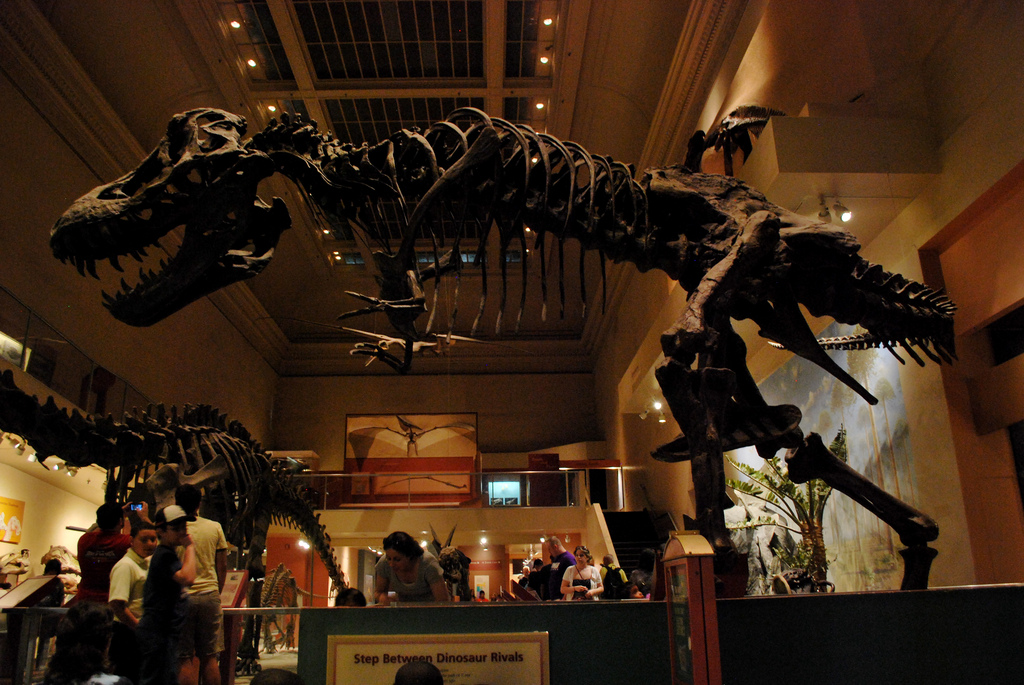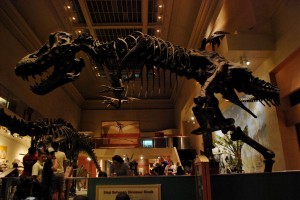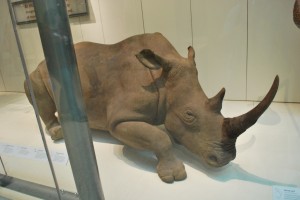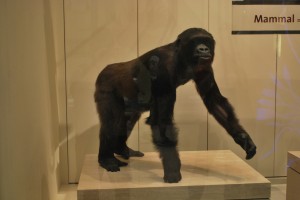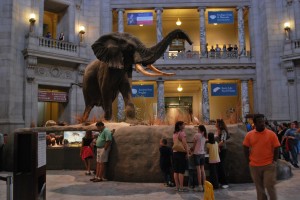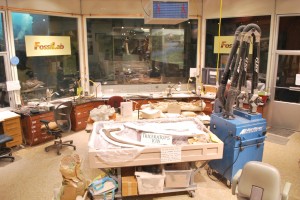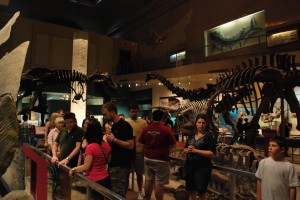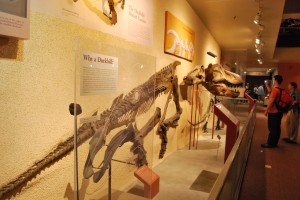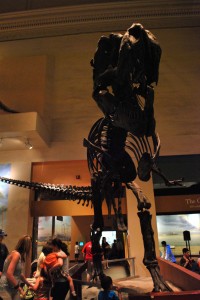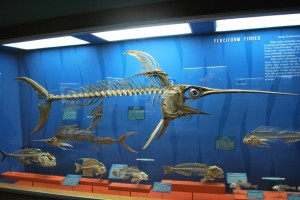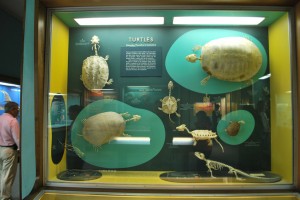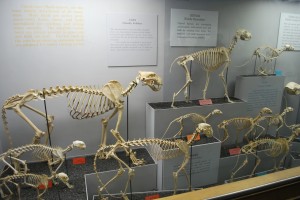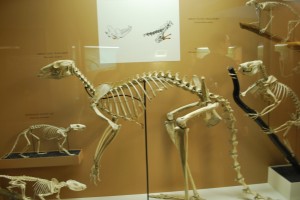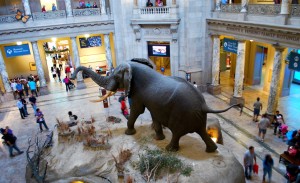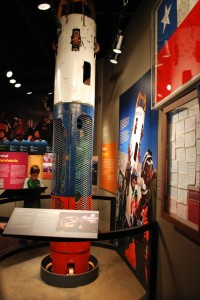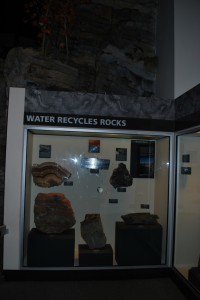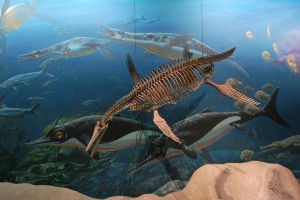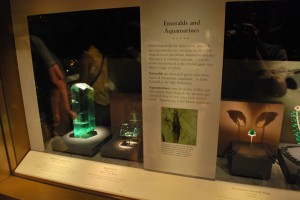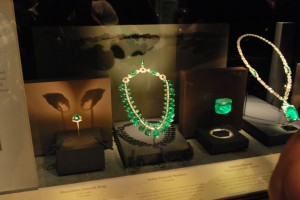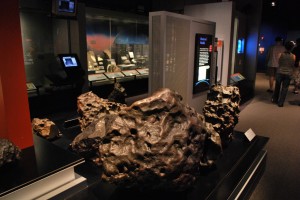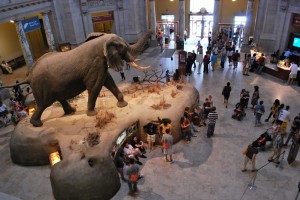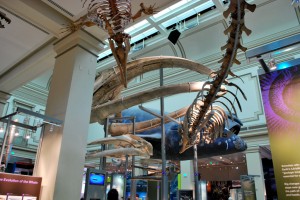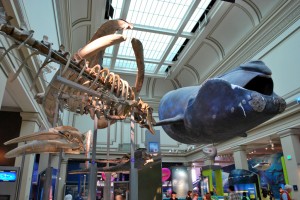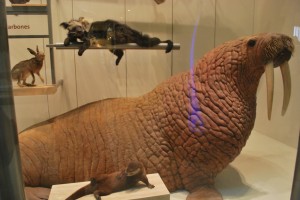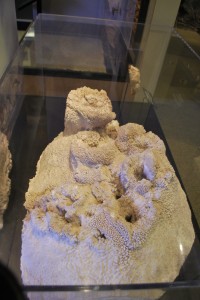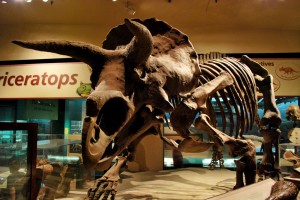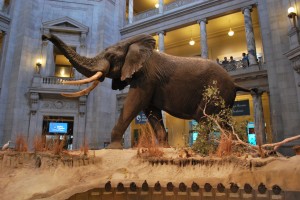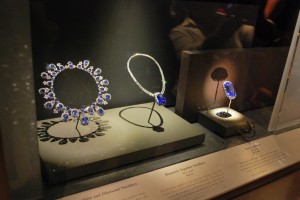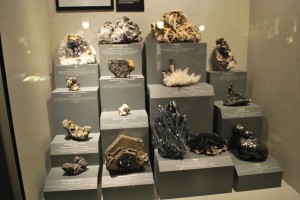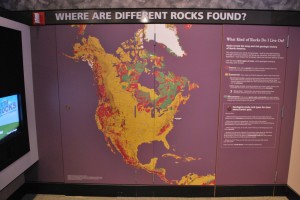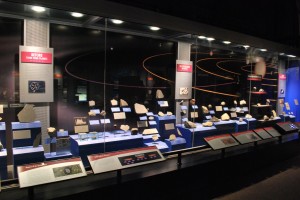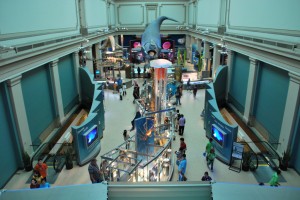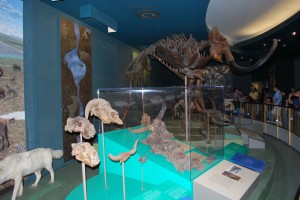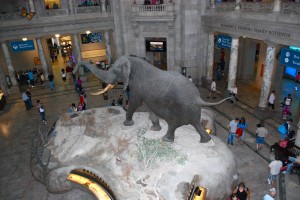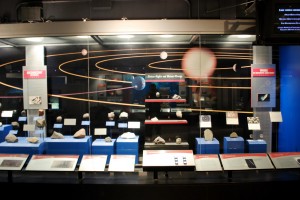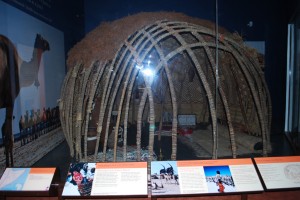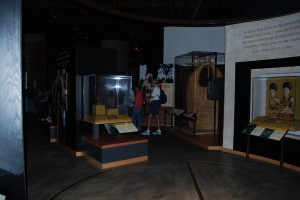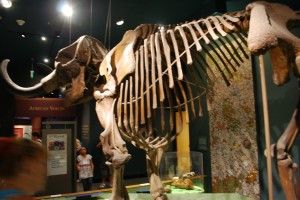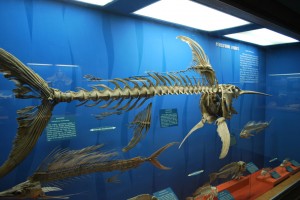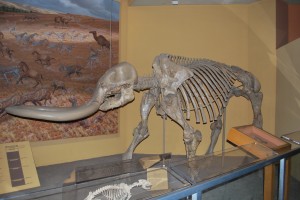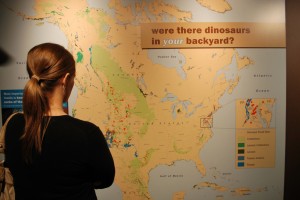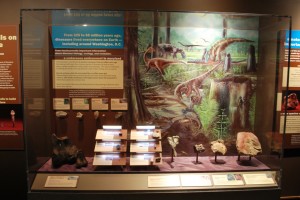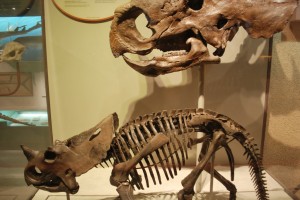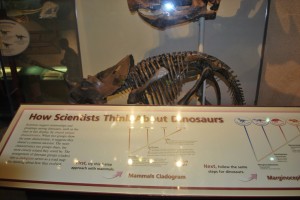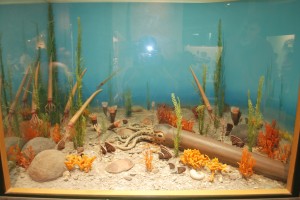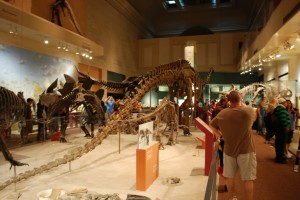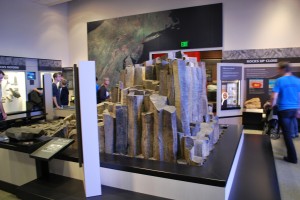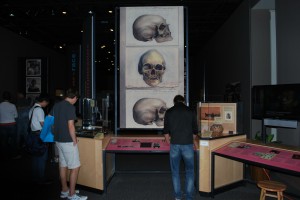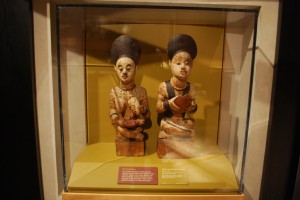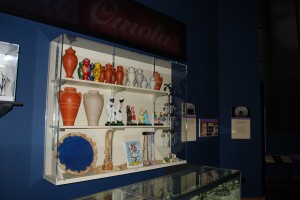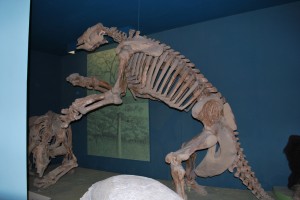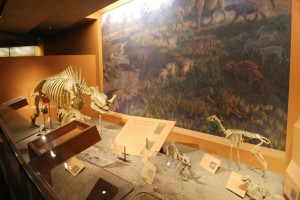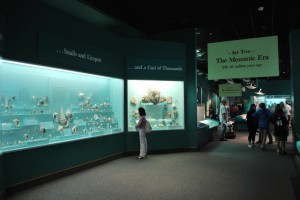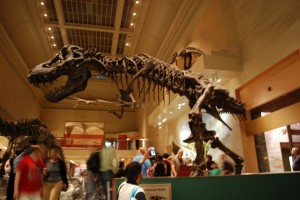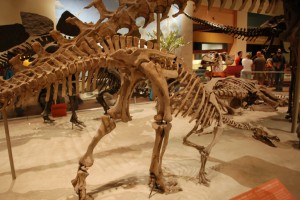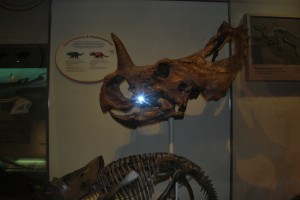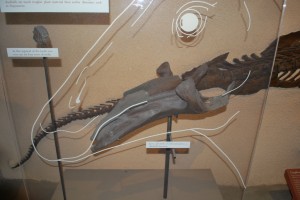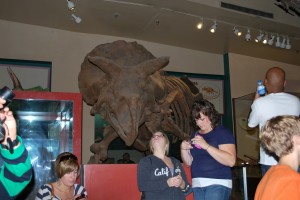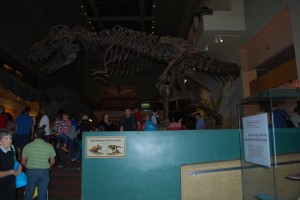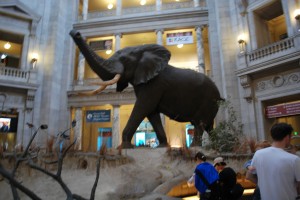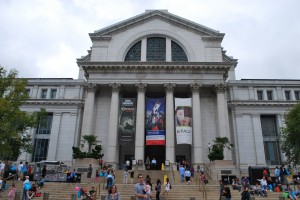
In addition to exhibits, the museum maintains have vast reference collections and research facilities. In 2005, The “Butterfly of Peace” gem was first displayed in the U.S. In 2008, an exhibit opened with 5,000 square feet dedicated to soil and its life-sustaining properties.
Hall of Geology, Gems, and Minerals
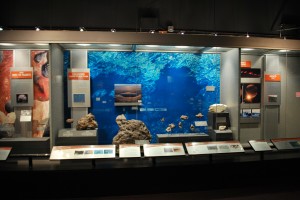
The collection is displayed in the Janet Annenberg Hooker Hall of Geology, Gems and Minerals, one of the many galleries in the Museum of Natural History. Some of the most important donors are Washington A. Roebling, the man who built the Brooklyn Bridge, who gave 16,000 specimens to the collection, Frederick A. Canfield, who donated 9,000 specimens to the collection, and Dr. Isaac Lea, who donated the base of the museum’s collection of 1312 gems and minerals.
Hall of Human Origins
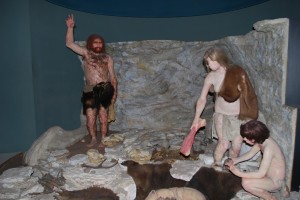
Dinosaurs/Hall of Paleobiology
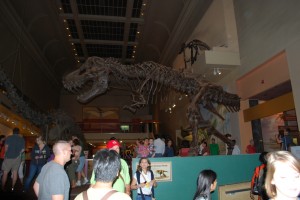
Hall of Mammals
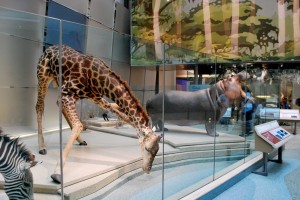
Insect Zoo
The O. Orkin Insect Zoo sponsored by Orkin(a pest control company) features live insects and exhibits about the study of insects (entomology). The insect zoo features different habitats to show the type of insects that live in different environments and how they have adapted to their environment it includes insect habitat in freshwater pond, house, mangrove swamp, desert, and rain forest.
Ocean Hall
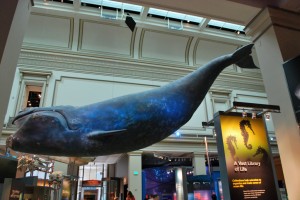 The Sant Ocean Hall opened on September 27, 2008, and is the largest renovation of the museum since it opened in 1910. The hall includes 674 marine specimens and models drawn from the over 80 million specimens in the museum’s total collection, the largest in the world. The hall is named for the Roger Sant family, who donated $15 million to endow the new hall and other related programs.
The Sant Ocean Hall opened on September 27, 2008, and is the largest renovation of the museum since it opened in 1910. The hall includes 674 marine specimens and models drawn from the over 80 million specimens in the museum’s total collection, the largest in the world. The hall is named for the Roger Sant family, who donated $15 million to endow the new hall and other related programs.
The hall consists of 23,000 square feet (2,100 m2) of exhibition space and features a replica of a 45-foot (14 m)-long North Atlantic Right Whale, a 1,500-gallon aquarium, one female giant squid displayed in the center of the hall and a male displayed off to the side, an adult coelacanth, and a Basilosaurus. The museum also provides the Smithsonian Ocean Portal, a complementary web site which provides regularly updated, original content from the museum’s research, collections, and Sant Ocean Hall as well as content provided by more than 20 collaborating organizations, including ARKive, Census of Marine Life, Consortium for Ocean Leadership, Encyclopedia of Life, IUCN, Monterey Bay Aquarium, Monterey Bay Aquarium Research Institute, National Geographic, NOAA, New England Aquarium, Ocean Conservancy, Oceana, Pew Charitable Trusts, SeaWeb, Save Our Seas, Scripps Institution of Oceanography, Woods Hole Oceanographic Institution, World Heritage Marine Programme.
African Voices
 This exhibit and associated website “examines the diversity, dynamism, and global influence of Africa’s peoples and cultures over time in the realms of family, work, community, and the natural environment.”
This exhibit and associated website “examines the diversity, dynamism, and global influence of Africa’s peoples and cultures over time in the realms of family, work, community, and the natural environment.”
Butterflies + Plants: Partners In Evolution
Featuring a live butterfly pavilion allows “visitors to observe the many ways in which butterflies and other animals have evolved, adapted, and diversified together with their plant partners over tens of millions of years.” The exhibit was designed by Reich + Petch.
Western Cultures Hall
“This hall explores some examples from various cultures in the western world including northern Iraq, ancient Egypt, Greece and Rome and the recent discovery of the Iceman, a Copper Age mummy found in an Italian glacier.” This exhibit closed September 26, 2010.
Korea Gallery
The Korea Gallery is a special showcase to celebrate Korean traditions and examine its unique influence and complex role in the world today. The exhibit expresses the continuity of the past by highlighting enduring features of Korean culture that have influence and resonance today.
The exhibit uses the Smithsonian ceramics collection as well as a rich selection of photographs, ritual objects and traditional Korean carpentry to communicate and connect to both the local Korean community and an international audience. Traditional art forms, such as ceramics and calligraphy, along with mythological figures, language, large feature photographs and illustrations speak to a fascinating range of shared historical memories that connect Koreans at home and abroad.
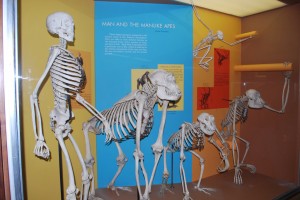
Osteology: Hall of Bones
Personal stories of modern Koreans, as told in their own voices, provide a context to discuss some of the many issues that face the divided country today. Korea’s incredible transformation from ‘The Hermit Kingdom’ to a world power is traced through its impact on the arts, the economy and popular culture.
This exhibit displays a “variety of vertebrate skeletons grouped by their evolutionary relationships.”
Discovering Rastafari!
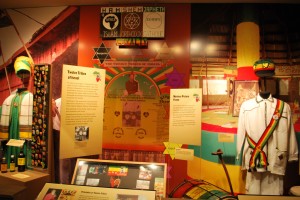
The Secrets of the Soil
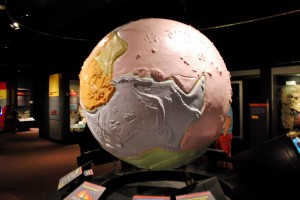 The exhibition explores the connections between soils and everyday life featuring the world of fungi, bacteria, worms, and other organisms,
The exhibition explores the connections between soils and everyday life featuring the world of fungi, bacteria, worms, and other organisms,
Written in Bone: Forensic Files of the 17th-Century Chesapeake
This part of the museum have an exhibition and a website that examines the history through 17th-century bone biographies. It includes one of the first colonists in the U.S. teetering on the edge of survival at Jamestown, Virginia. It also depicts the the wealthy and well-established individuals of St. Mary’s City, Maryland.
Farmers, Warriors, Builders: The Hidden Life of Ants
The exhibition features large photographs of ants going about their daily business, a cast of an underground ant city, and a live ant colony. The museum shows the ant on an IMAX Theater in a full featured films and have a Discovery Room for some hands-on activity on the first floor. The lower level part of the exhibition features native and migratory birds in Washington D.C.

